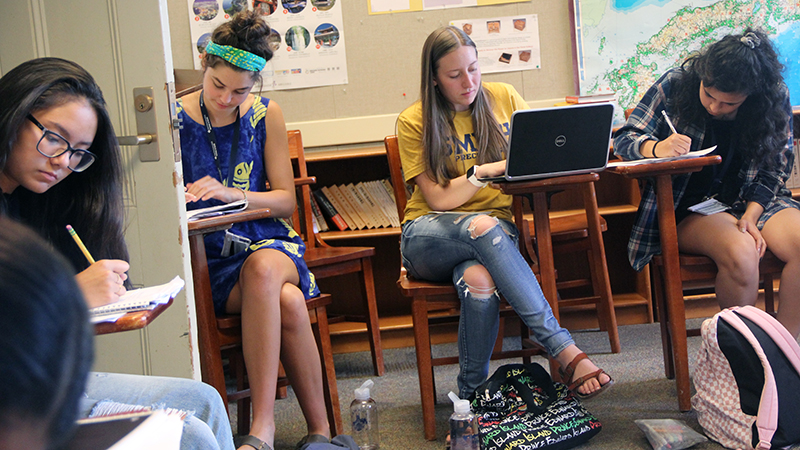
Welcome to our insightful article on the top 10 popular songwriting techniques. In this comprehensive guide, we aim to unlock the hidden potential of your musical prowess.
In this article, we will delve into the art of crafting catchy melodies. We will explore techniques to create melodies that stick in your listeners' heads and leave a lasting impression.
Next, we will focus on mastering dynamic song structures. Understanding how to build a song with the right balance of tension and release is crucial for keeping your audience engaged from start to finish.
Writing meaningful and emotional lyrics is another important aspect of songwriting. We will provide tips and strategies for crafting lyrics that resonate with your audience and evoke powerful emotions.
Effective chord progressions are the foundation of many great songs. We will discuss different chord progressions and how to use them to create a compelling musical backdrop for your lyrics and melodies.
Rhythm and groove experimentation can add depth and interest to your songs. We will explore ways to experiment with rhythm and groove to create unique and memorable musical experiences.
The impact of vocal techniques cannot be underestimated. We will discuss various vocal techniques that can enhance your songwriting, from melodic embellishments to powerful delivery.

Lastly, we will encourage collaboration and co-writing as a means to find limitless artistic inspiration. Working with other songwriters can bring fresh perspectives and ideas to your music.
So, let your inner Mozart soar as we embark on this enlightening journey together. Get ready to take your songwriting skills to new heights with these top 10 popular songwriting techniques.
Crafting Catchy Melodies
When crafting catchy melodies, it is essential to consider the emotional resonance they evoke in listeners. To create a memorable and impactful melody, songwriters often focus on crafting unique harmonies and utilizing melodic hooks.
Crafting unique harmonies involves creating chord progressions that are unexpected and intriguing, adding layers of complexity to the melody. This can be achieved by experimenting with different chord voicings, inversions, and substitutions.
Utilizing melodic hooks involves creating a melodic line or motif that is instantly recognizable and sticks in the listener's mind. This can be achieved through the repetition of a catchy phrase or a memorable melodic contour.
Mastering Dynamic Song Structures
Frequently, songwriters employ dynamic song structures by incorporating contrasting sections and varying intensities to create engaging and captivating musical journeys for their listeners. To evoke emotion in the audience, mastering transitions and creating tension and release are key techniques to consider.
Here are two sub-lists that can help achieve this:

- Mastering Transitions
- Utilize smooth modulations between different sections to create seamless flow.
- Experiment with techniques such as fade-ins, fade-outs, and crossfades to enhance the transition between verses, choruses, and bridges.
- Creating Tension and Release
- Build anticipation by gradually increasing the intensity, such as adding layers of instrumentation or vocal harmonies.
- Provide release by introducing contrasting elements, such as a stripped-down section or a powerful climax, to create a satisfying resolution.
Writing Meaningful and Emotional Lyrics
When it comes to writing meaningful and emotional lyrics, there are several key points to consider.
First, successful songwriters have a knack for evoking a deep emotional connection with their audience, tapping into universal human experiences and emotions.
Additionally, crafting relatable storytelling is crucial, as it allows listeners to connect with the narrative and find personal meaning in the lyrics.
Lastly, conveying raw vulnerability can create a powerful impact, as it allows the songwriter to express their own emotions authentically and invite listeners to do the same.
Evoking Deep Emotional Connection
Crafting lyrics that resonate with listeners on a profound level, evoking a deep emotional connection, is an essential skill for any songwriter. To evoke nostalgia, songwriters can use familiar melodies or incorporate elements from a bygone era. This can transport listeners back to a time or place that holds sentimental value, triggering powerful emotions.
Creating powerful imagery is another effective technique. By using vivid and descriptive language, songwriters can paint a picture in the minds of listeners, allowing them to connect with the emotions being conveyed. Metaphors and similes can also be employed to add depth and layers of meaning to the lyrics, stimulating the audience's imagination.
Crafting Relatable Storytelling
To effectively convey meaningful and emotional lyrics, songwriters must master the art of crafting relatable storytelling. By relating to personal experiences and incorporating universal themes, songwriters have the power to connect with listeners on a deep and emotional level.

One effective technique is to draw inspiration from real-life events and emotions, allowing the audience to empathize with the songwriter's experiences. By using vivid and descriptive language, songwriters can paint a picture that resonates with the listener's own experiences, evoking strong emotions and creating a sense of shared understanding.
Additionally, incorporating universal themes such as love, loss, and personal growth can further enhance the relatability of the lyrics. Through crafting relatable storytelling, songwriters have the ability to touch the hearts and souls of their audience, creating a lasting impact that transcends time and place.
Conveying Raw Vulnerability
Emotions are laid bare, and vulnerability shines through, as songwriters master the art of conveying raw vulnerability in their meaningful and emotional lyrics. Exploring vulnerability in lyrics allows songwriters to create a deep connection with their audience, evoking powerful emotions and resonating with their experiences. To achieve this, songwriters employ various techniques that touch the souls of listeners:
Honesty: Being authentic and genuine in expressing personal experiences and emotions.
Metaphors and Symbolism: Using metaphors and symbols to convey complex emotions in a relatable way.
Example: Comparing a broken heart to shattered glass.
Example: Using a candle as a symbol of hope in dark times.

Intimate Details: Including specific details that paint a vivid picture and create a profound emotional impact.
Example: Describing the color of someone's eyes or the scent of a familiar place.
Utilizing Effective Chord Progressions
By exploring various chord progressions, songwriters can enhance the musicality and overall impact of their compositions. Harmonic progression variations offer a wide range of possibilities for creating tension and release, adding depth and complexity to a song.
By incorporating unexpected chord changes or altering the order of chords within a progression, songwriters can surprise and captivate listeners. Utilizing chord inversions is another effective technique that can bring new life to a composition. Inversions involve rearranging the notes within a chord, resulting in a different voicing and texture.
This can create a sense of movement and provide a fresh perspective on familiar chord progressions. By experimenting with these techniques, songwriters can unlock a world of possibilities and take their compositions to new heights.
Experimenting With Rhythm and Groove
Through the exploration of rhythm and groove, songwriters can infuse their compositions with infectious energy and create a captivating musical experience. Experimenting with tempo changes and exploring unconventional time signatures can add a unique and dynamic element to a song, allowing the audience to experience a range of emotions.
Here are two ways in which rhythm and groove can evoke emotion in the audience:

Building anticipation: By gradually increasing the tempo or using syncopation, songwriters can create a sense of anticipation and excitement, making the audience feel a surge of energy and freedom.
Creating tension and release: Experimenting with unconventional time signatures, such as 5/4 or 7/8, can create a sense of tension and unpredictability. When the song transitions back to a more familiar time signature, it releases the tension and provides a feeling of resolution and satisfaction.
Incorporating Hooks and Memorable Refrains
To create a memorable and catchy song, songwriters can incorporate hooks and memorable refrains that captivate listeners and leave a lasting impression.
Creating catchy hooks that stick in listeners' minds is essential for a song's success. A hook is a short, melodic phrase or a catchy line that grabs the listener's attention and keeps them engaged throughout the song. It acts as the centerpiece of the song, making it instantly recognizable and memorable.
Crafted with skill and creativity, a hook can become the defining element of a song, attracting a wider audience and increasing its commercial appeal.
In addition to hooks, songwriters can also focus on crafting memorable refrains that leave a lasting impact on the audience. A refrain is a repeated section of a song that often contains the song's main message or theme. By creating a powerful and memorable refrain, songwriters can reinforce their message and connect with their audience on a deeper level.
A well-crafted refrain can make a song more relatable and memorable, allowing listeners to connect with the emotions and meaning behind the lyrics.

Exploring Different Songwriting Genres
Exploring different songwriting genres allows musicians to tap into the vast array of musical styles and influences that exist.
One key point to consider is how the genre can influence the lyrics of a song, shaping the themes and storytelling.
Additionally, embracing musical diversity within genres can create unique and captivating compositions that stand out in the industry.
Genre Influence on Lyrics
Different songwriting genres shape and mold the lyrics, allowing them to reflect the unique characteristics and themes of each genre. The influence of genre on lyrics goes beyond just the musical style; it also impacts the lyrical content and emotional resonance of a song.
Here are two ways in which genre influences lyrics:
Melody: Each genre has its own distinct melodic patterns and structures. The lyrics are crafted to fit these melodies, resulting in different rhythmic and tonal qualities. For example, in pop music, the lyrics often follow a catchy and repetitive melody, while in folk or country music, the lyrics may have a more storytelling and narrative quality.
Lyrical Themes: Different genres explore different themes and subject matters. For instance, rock music often delves into themes of rebellion, love, and angst, whereas country music often focuses on themes of heartbreak, rural life, and storytelling. These genre-specific themes shape the lyrics and evoke specific emotions in the audience.

Musical Diversity in Genres
As songwriters delve into the exploration of various songwriting genres, they gain a deeper understanding of the musical diversity present in each genre's unique characteristics and styles. This exploration leads to the discovery of musical fusion, where different genres blend together to create something new and exciting.
Through the integration of cultural influences, songwriters can infuse their compositions with elements from various traditions and styles, resulting in a rich and diverse musical tapestry.
By embracing different songwriting genres, artists have the freedom to experiment with different sounds, rhythms, and melodies, allowing for endless possibilities in their creative expression.
This musical diversity not only keeps the art form alive and evolving but also allows songwriters to connect with a broader audience by appealing to different musical tastes and preferences.
Blending Multiple Genres
By seamlessly melding together various musical styles, songwriters are able to create unique and captivating compositions that push the boundaries of traditional genre classifications. Blending classical elements with contemporary sounds has become a popular technique in modern songwriting. This fusion of traditional and contemporary styles allows songwriters to create compositions that are both nostalgic and fresh, appealing to a wide range of audiences.
When blending multiple genres, songwriters have the opportunity to evoke a wide range of emotions in their listeners. Here are two ways they achieve this:
Creating contrast: By juxtaposing contrasting genres, songwriters can create a sense of tension and release, keeping the audience engaged throughout the song.

Eliciting nostalgia: Blending traditional elements with contemporary sounds can evoke a sense of nostalgia in the audience, transporting them to a different time and place.
This blending of genres not only showcases the songwriter's creativity but also provides listeners with a sense of freedom and exploration.
Enhancing Songs With Creative Instrumentation
One effective approach to elevate your songs to the next level is by incorporating unique and imaginative instrumentation techniques. Exploring unconventional instruments and creating unique sonic textures can greatly enhance the overall sound and impact of your songs.
By venturing beyond the traditional guitar, drums, and piano, you can open up a world of possibilities and create a distinct and memorable musical experience for your listeners. Consider incorporating instruments such as the sitar, kalimba, or even a theremin to add a touch of exoticism and intrigue to your compositions.
Additionally, experimenting with different effects pedals, synthesizers, and sound manipulation techniques can help you create interesting sonic textures that add depth and complexity to your songs.
Embrace the freedom to explore and experiment with instrumentation, and watch your songs come alive with creativity and originality.
Utilizing Vocal Techniques for Impactful Delivery
When it comes to impactful delivery in songs, one of the key factors is breath control for vocals. By mastering breath control, singers can sustain notes, create dynamics, and effectively convey emotions to the listeners.

Additionally, vocal techniques play a crucial role in infusing songs with the desired level of emotion. From vibrato to falsetto, singers can utilize various techniques to add depth and expressiveness to their performances.
Breath Control for Vocals
A singer's ability to control their breath is crucial for achieving impactful delivery in vocal performances. By incorporating specific breathing exercises and vocal warm-ups, singers can enhance their breath control and create a more powerful and emotional connection with their audience.
To evoke emotion in the audience, singers can utilize the following techniques:
Dynamic Control: Varying the intensity and volume of the voice to convey different emotions and create a sense of freedom within the performance.
Sustained Phrases: Holding notes for longer durations to create tension and build anticipation, allowing the audience to feel the emotional depth of the lyrics.
Emotion Through Vocal Techniques
To truly engage and move the audience, singers must harness the power of their vocal techniques and employ them skillfully.
Vocal dynamics and expression play a crucial role in conveying emotions effectively in a song. The ability to vary the volume, intensity, and tone of their voice allows singers to create a dynamic and captivating performance. By utilizing vocal dynamics, such as crescendos and decrescendos, singers can add depth and intensity to their delivery, evoking a range of emotions in the listener.

Furthermore, vocal expression, including the use of vibrato, falsetto, and melisma, can add nuance and texture to the performance, intensifying the emotional impact.
Collaborating and Co-writing Songs for Inspiration
Through the process of collaborating and co-writing songs, songwriters can tap into a wealth of inspiration and creativity. Collaborative techniques allow for the blending of different ideas and perspectives, resulting in unique and powerful compositions.
The co-writing process fosters a sense of freedom and exploration, as songwriters bounce ideas off each other and build upon each other's strengths. It encourages a collaborative mindset, where individuals can learn from one another and push the boundaries of their own creativity.
This collaborative approach enhances the songwriting process by bringing together diverse skill sets and experiences, leading to the creation of emotionally charged and relatable music. It allows for the exploration of different genres, styles, and themes, ensuring that the final product resonates with a wide audience.
Frequently Asked Questions
What Are Some Common Mistakes to Avoid When Crafting Catchy Melodies?
When crafting catchy melodies, it is important to avoid common mistakes such as neglecting to analyze melodic structure and failing to understand melodic contour. These elements are crucial in creating memorable and engaging musical compositions.
How Can I Effectively Transition Between Different Sections in a Song?
Effective ways to build tension and release in song transitions include utilizing dynamic changes and creating seamless flow between sections. This can be achieved through careful arrangement, modulation, and use of contrasting elements to maintain listener engagement and enhance overall musical experience.
Are There Any Specific Techniques to Evoke Specific Emotions in Song Lyrics?
Specific techniques can be employed to evoke specific emotions in song lyrics. The impact of storytelling in songwriting allows for the creation of a narrative that resonates with listeners, eliciting a desired emotional response.

Can You Provide Examples of Popular Songs With Unique Chord Progressions?
Unique chord progressions in popular songs can add intrigue and captivate listeners. Examples of hit songs with unconventional rhythms and grooves include "Bohemian Rhapsody" by Queen, "Smells Like Teen Spirit" by Nirvana, and "Hotel California" by Eagles.
How Can I Incorporate Unconventional Rhythms and Grooves Into My Songwriting?
Exploring polyrhythms, asymmetrical time signatures, unconventional grooves with electronic elements, and experimenting with syncopation and off-beat rhythms can add depth and uniqueness to songwriting. These techniques offer freedom for composers seeking innovative and unconventional compositions.
 Writing TipsCreative WritingJournalingSketching TechniquesBuying GuidesPrivacy PolicyTerms And Conditions
Writing TipsCreative WritingJournalingSketching TechniquesBuying GuidesPrivacy PolicyTerms And Conditions
